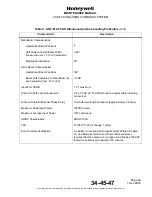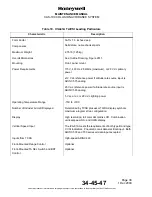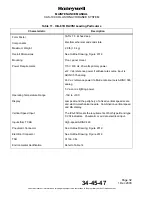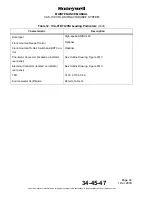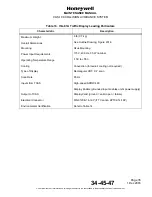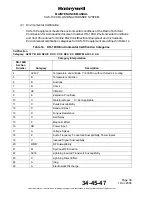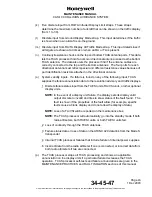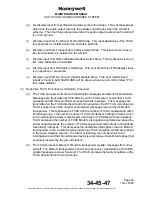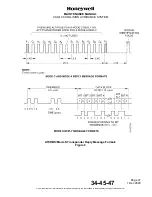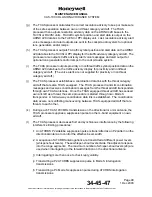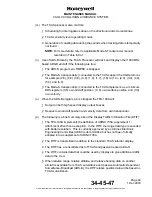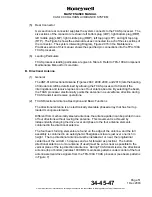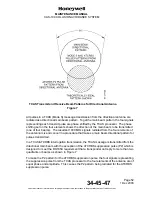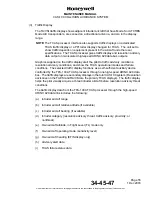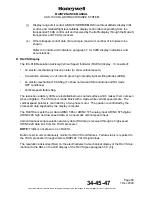
Page 44
1 Dec 2003
34-45-4
7
MAINTENANCE MANUAL
CAS-100 COLLISION AVOIDANCE SYSTEM
Use or disclosure of information on this page is subject to the restrictions in the proprietary notice of this document.
(q) Six discrete input from synthesized Audio Level Control straps. Three of these straps
determine the audio output levels to the speaker and phones when the aircraft is
airborne. The other three straps determine the audio output levels when the aircraft
is on the ground.
(r)
Discrete input from Functional Test Inhibit Strap. This input determines if the TCAS
functional test is inhibited when the aircraft is airborne.
(s)
Discrete input from Transponder Interface Select Strap. This input shows if one or
two transponders are installed on the aircraft.
(t)
Discrete input from Radio Altimeter Interface Select Strap. This input shows if one or
two radio altimeters are installed.
(u) Discrete input from RA Status Inhibit Strap. This input determines if RA display status
is in operation or prevented.
(v)
Discrete input from On-Ground Intruder Disable Strap. This input determines if
intruders found to be ON GROUND will be shown when own aircraft is below 1750
feet (radio altitude).
(3) Real-Time TCAS Functions Controlled by Processor
(a) The TCAS processor formats and transmits the messages and listens for broadcasts.
Messages are transmitted at 1030 MHz by each TCAS system to tell other TCAS
equipped aircraft that own TCAS equipped aircraft is present. The messages are
transmitted on the TCAS directional and omni antennas. Each TCAS, including own
TCAS, keeps track of the number of broadcast messages received by its Mode S
transponder. This supplies each TCAS with the number of TCAS equipped aircraft in
broadcast range. This number is used in TCAS interference limiting formulas, which
is for controlling the power output levels and rates for TCAS Mode S interrogations.
TCAS decreases the number of TCAS Mode S interrogations and also decreases the
power output levels as the number of TCAS equipped aircraft (number of broadcast
receptions) increases. This decreases the detectable interrogation load on Mode S
transponders in the conditions where numerous TCAS equipped aircraft are present
in the same airspace volume. The effect of reducing the number of air-to-air
interrogations and their transmit power levels is a decrease of unsolicited replies (fruit
overload) received by the ground stations.
(b) The TCAS processor listens for Mode S transponder squitter messages from other
aircraft. The Mode S transponders show their presence by transmitting a 1090 MHz
squitter message once each second. The TCAS processor listens for squitters on the
TCAS directional and omni antennas.

